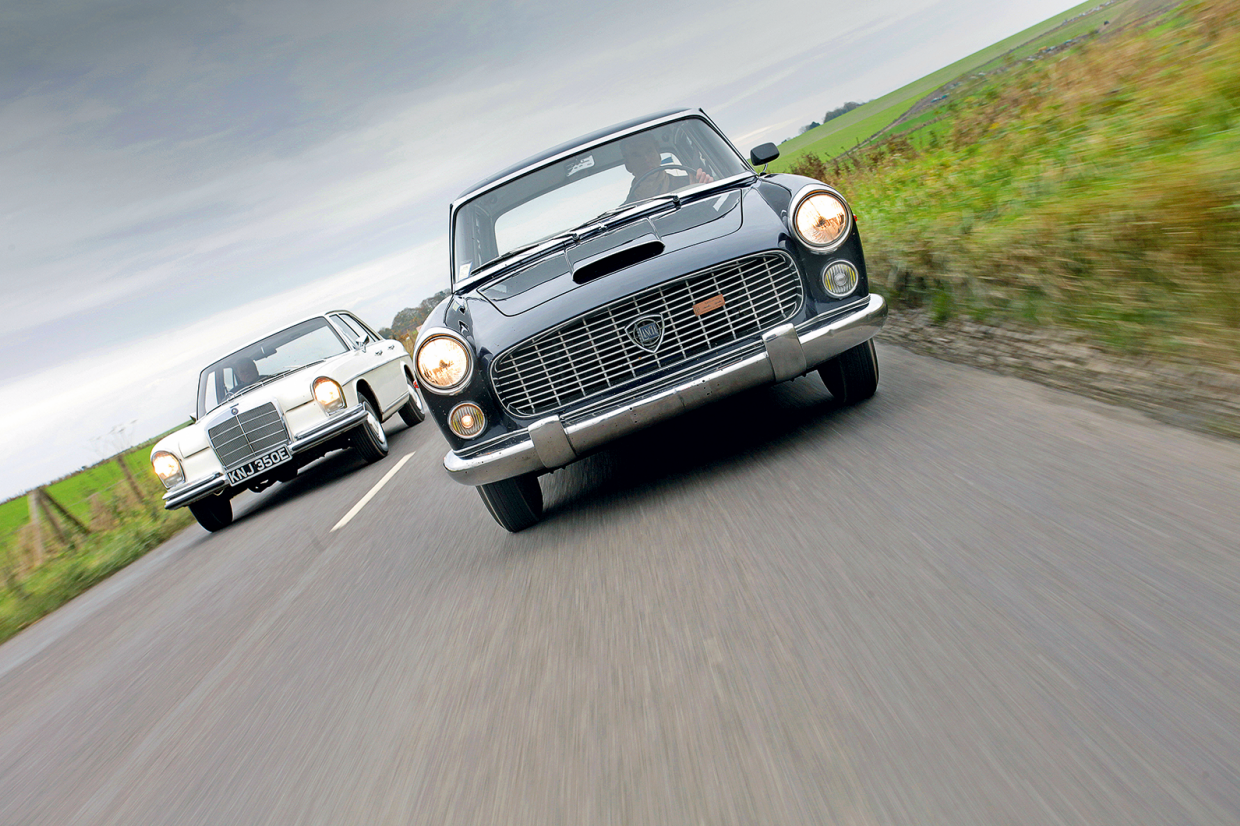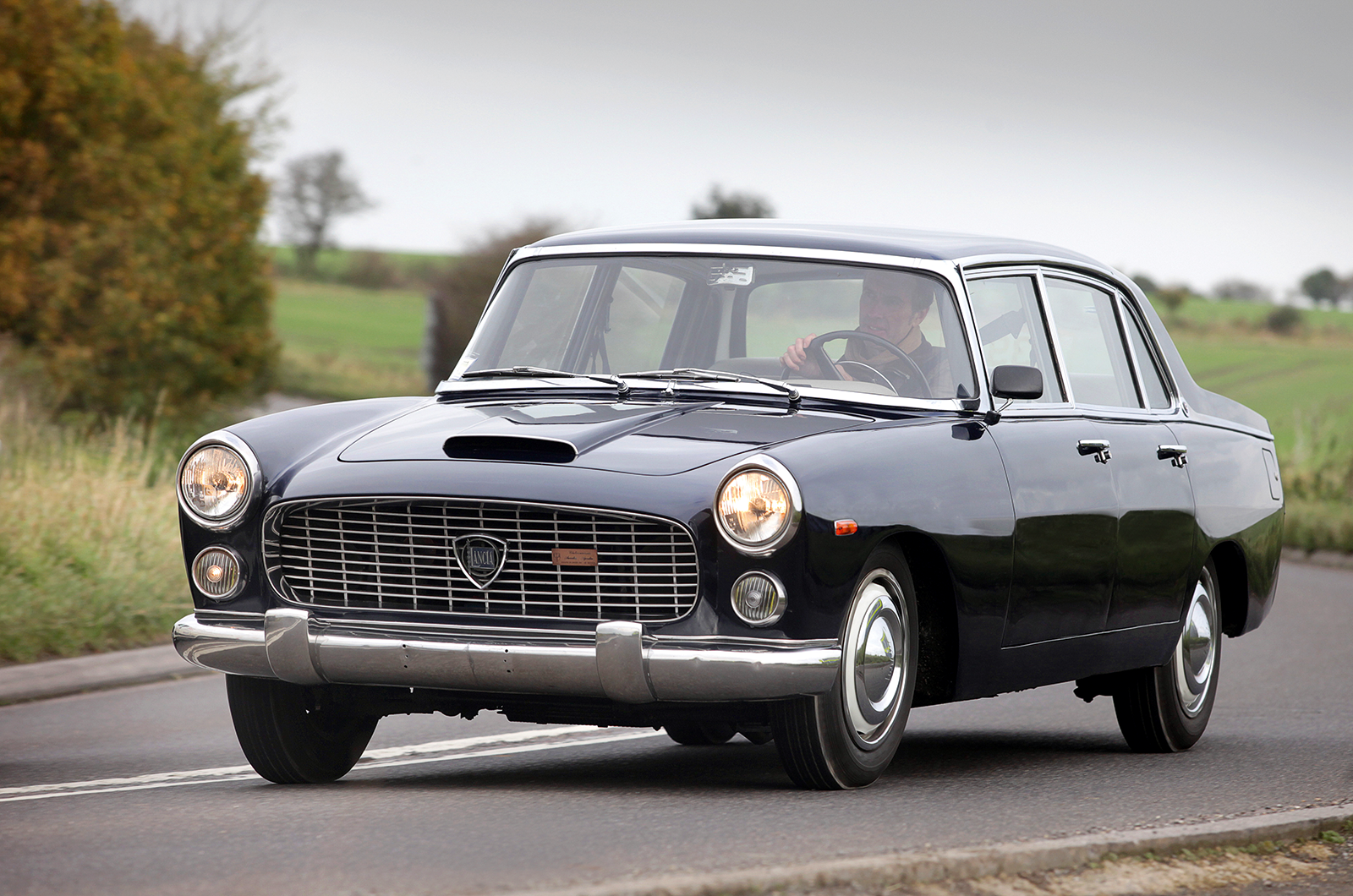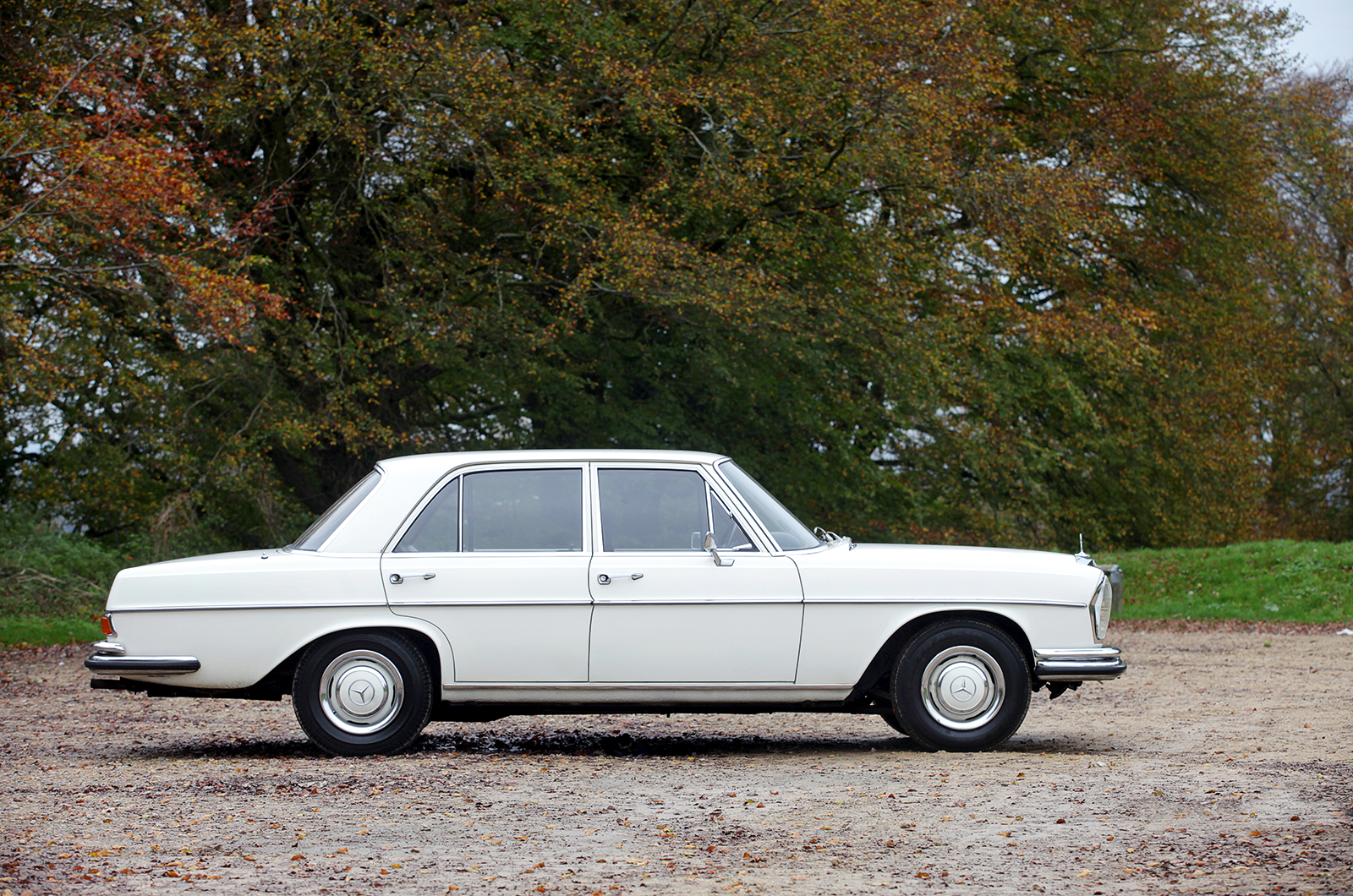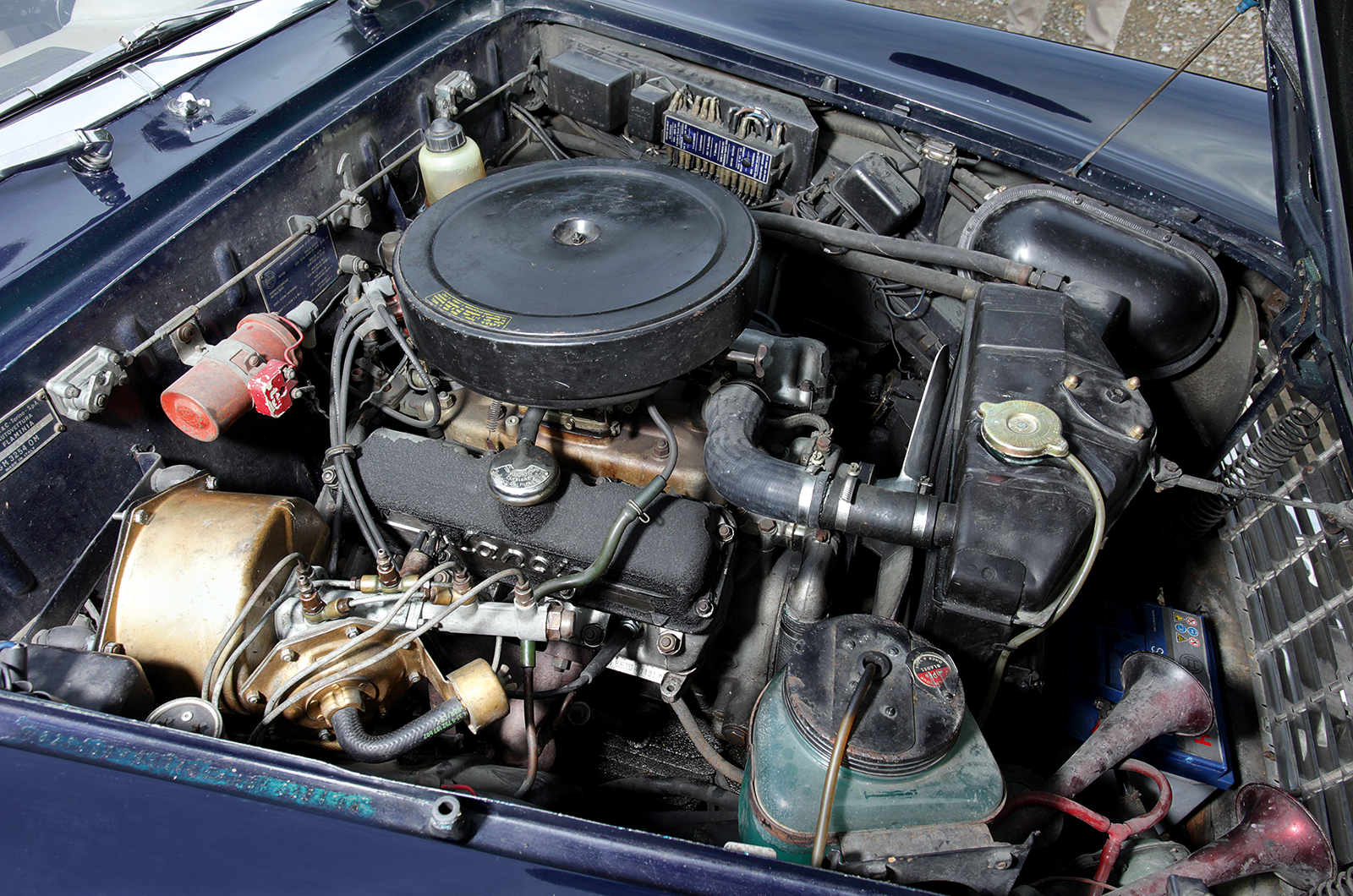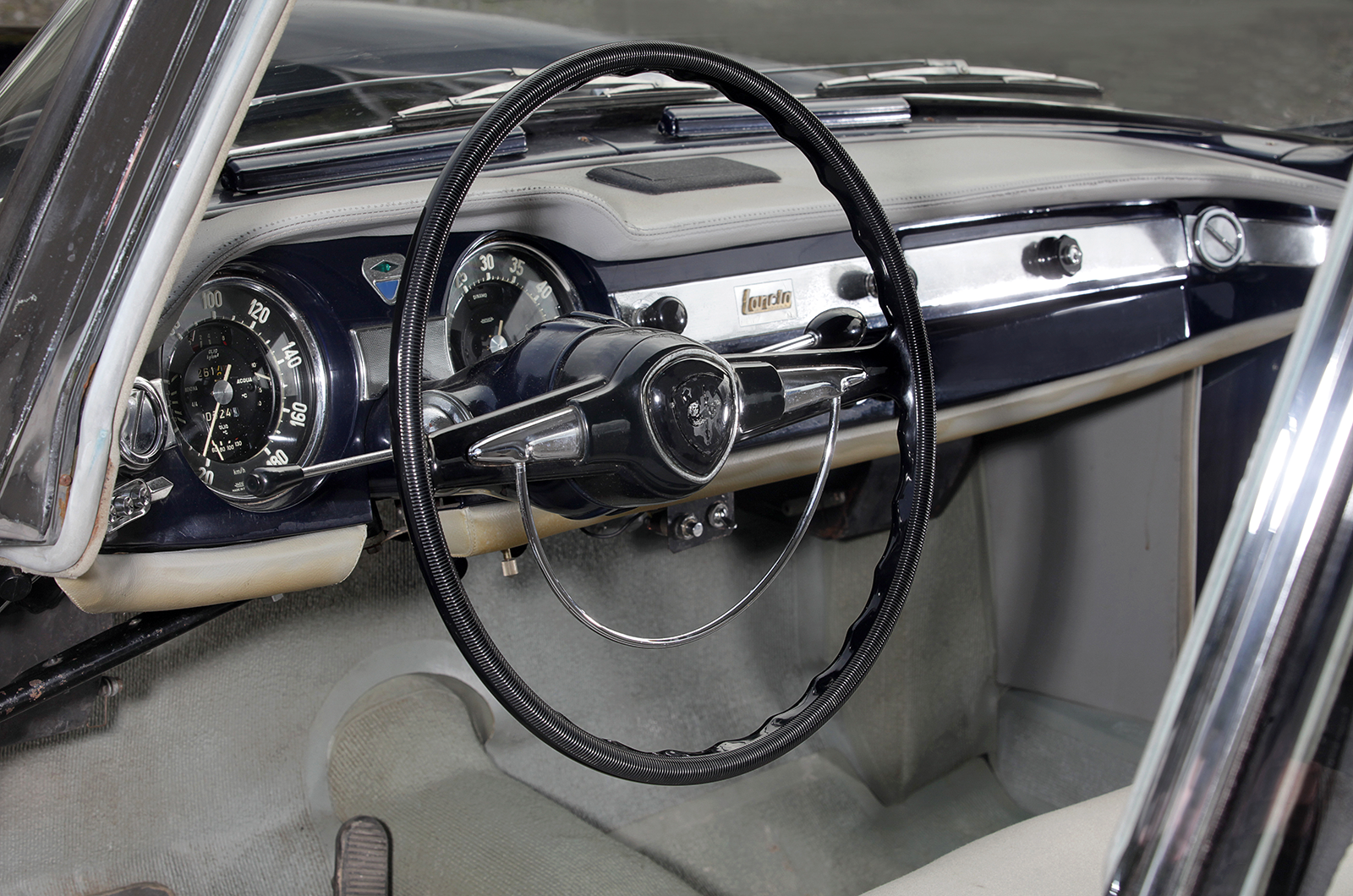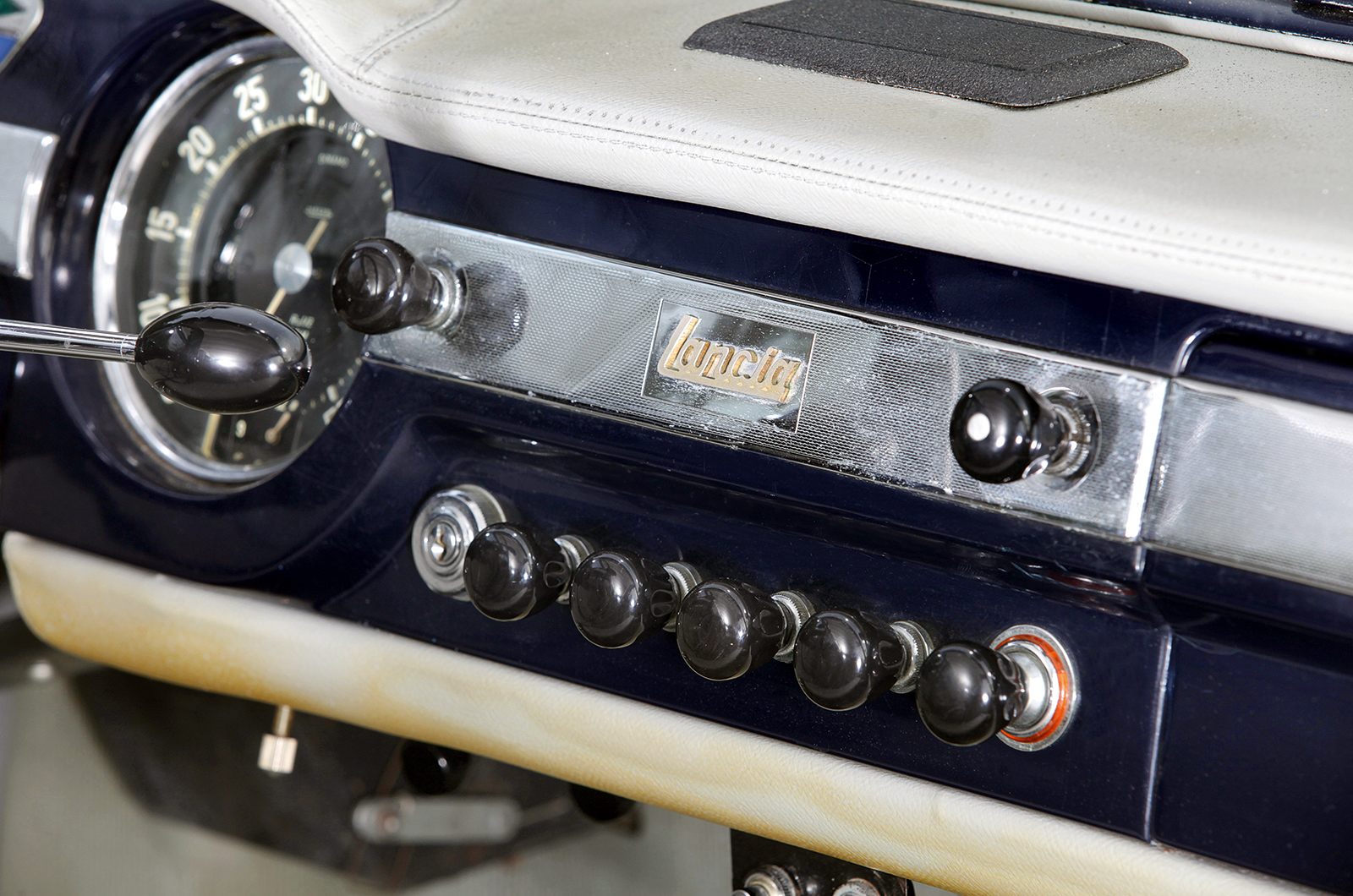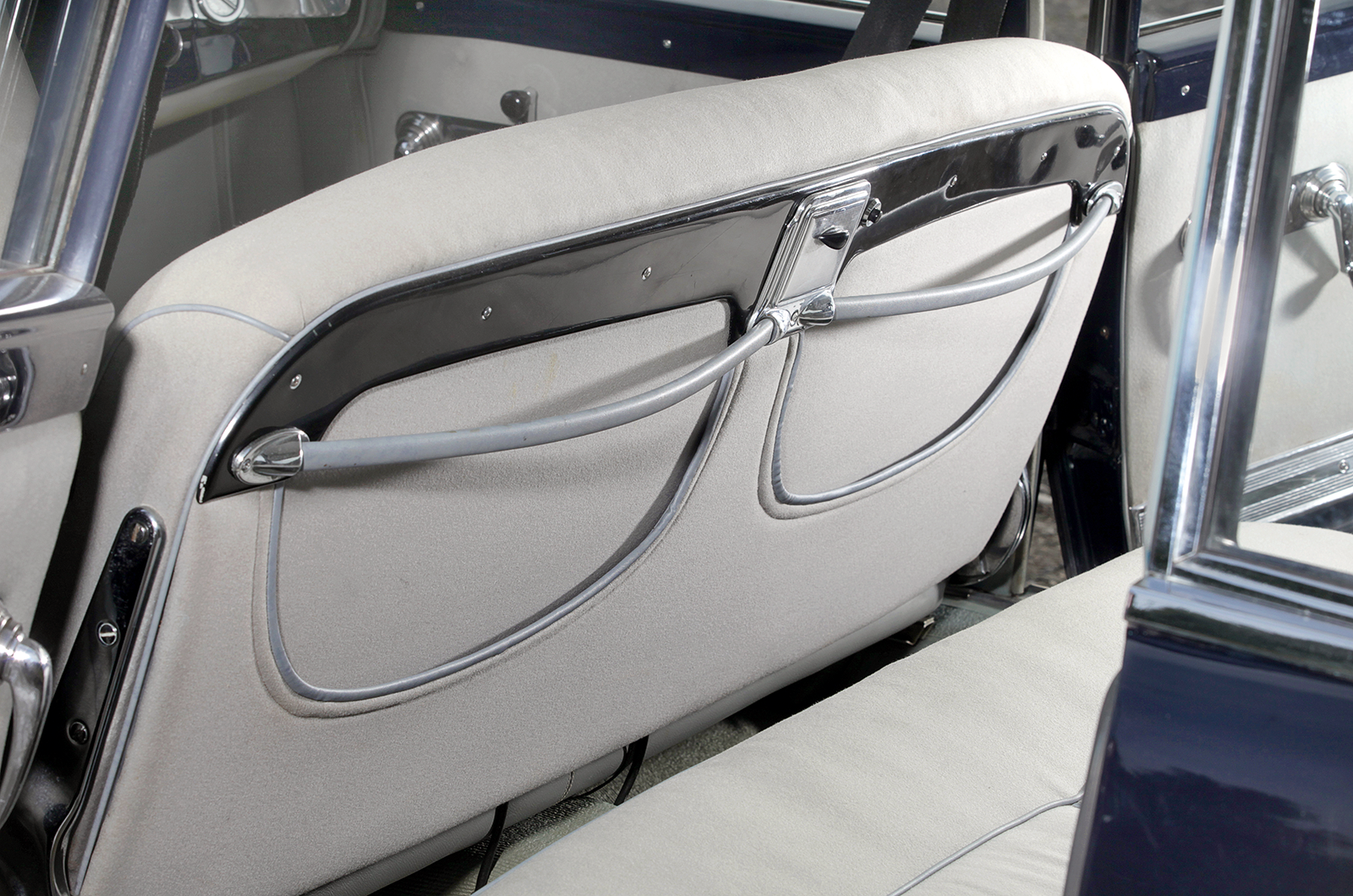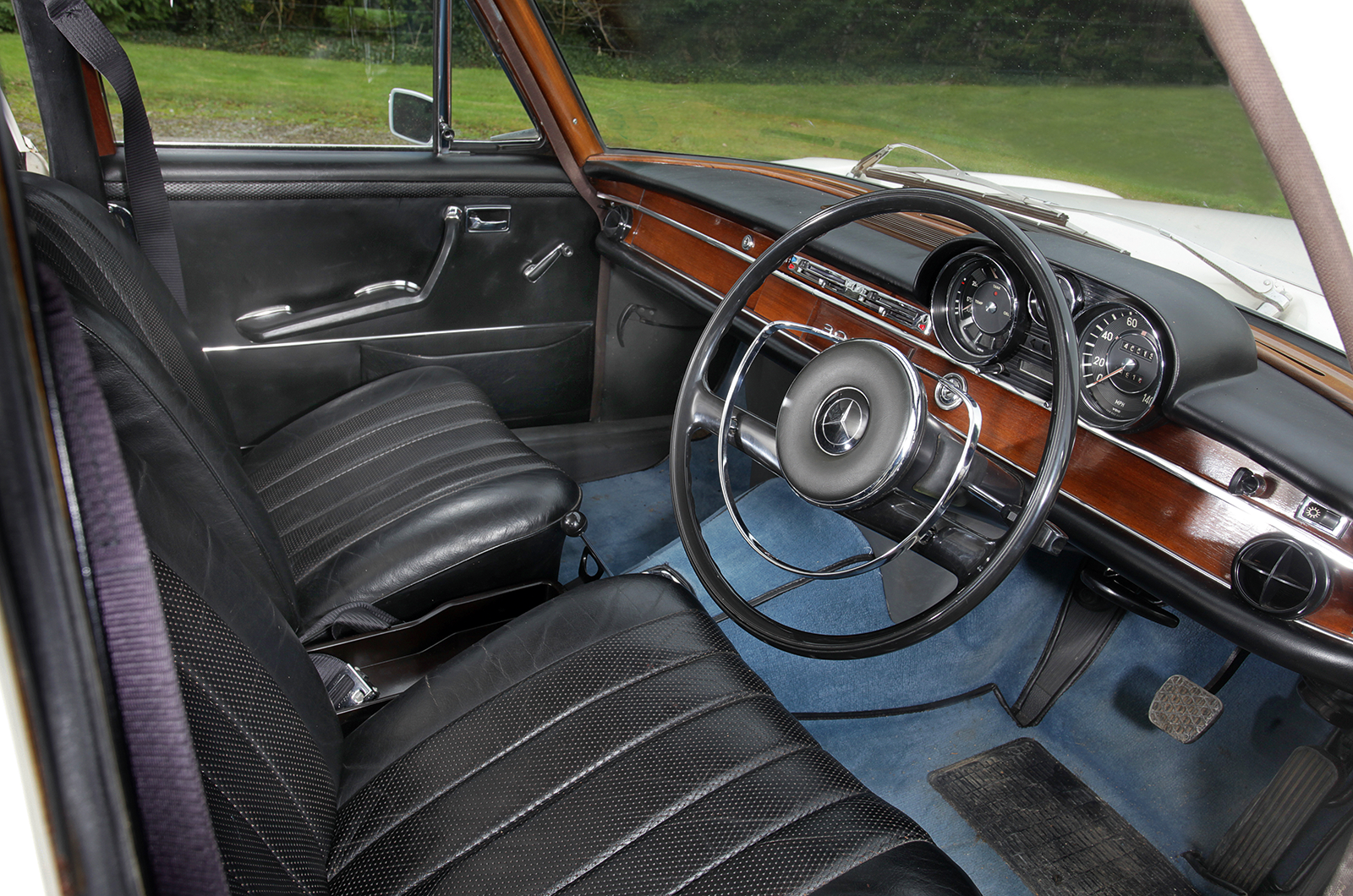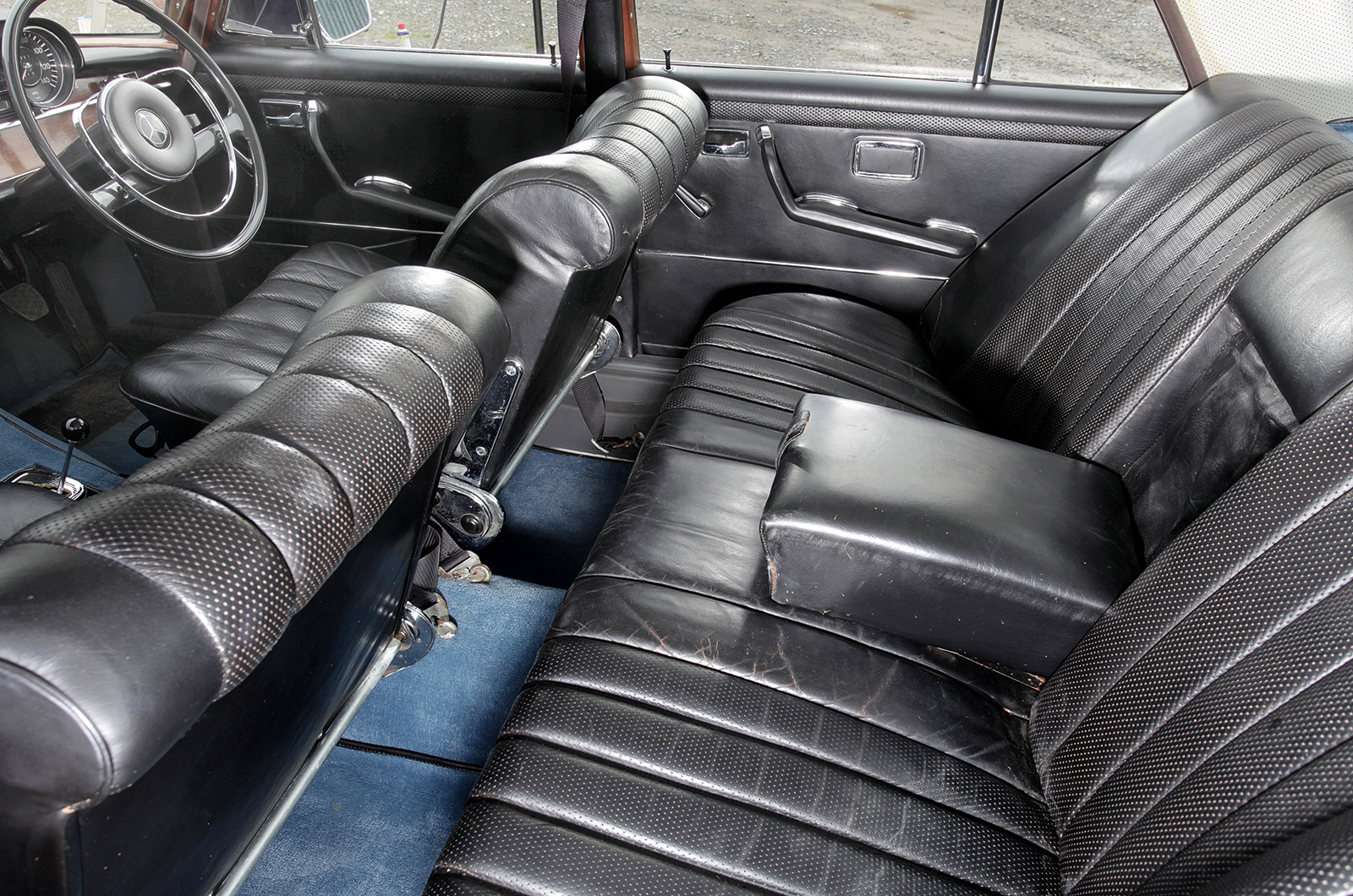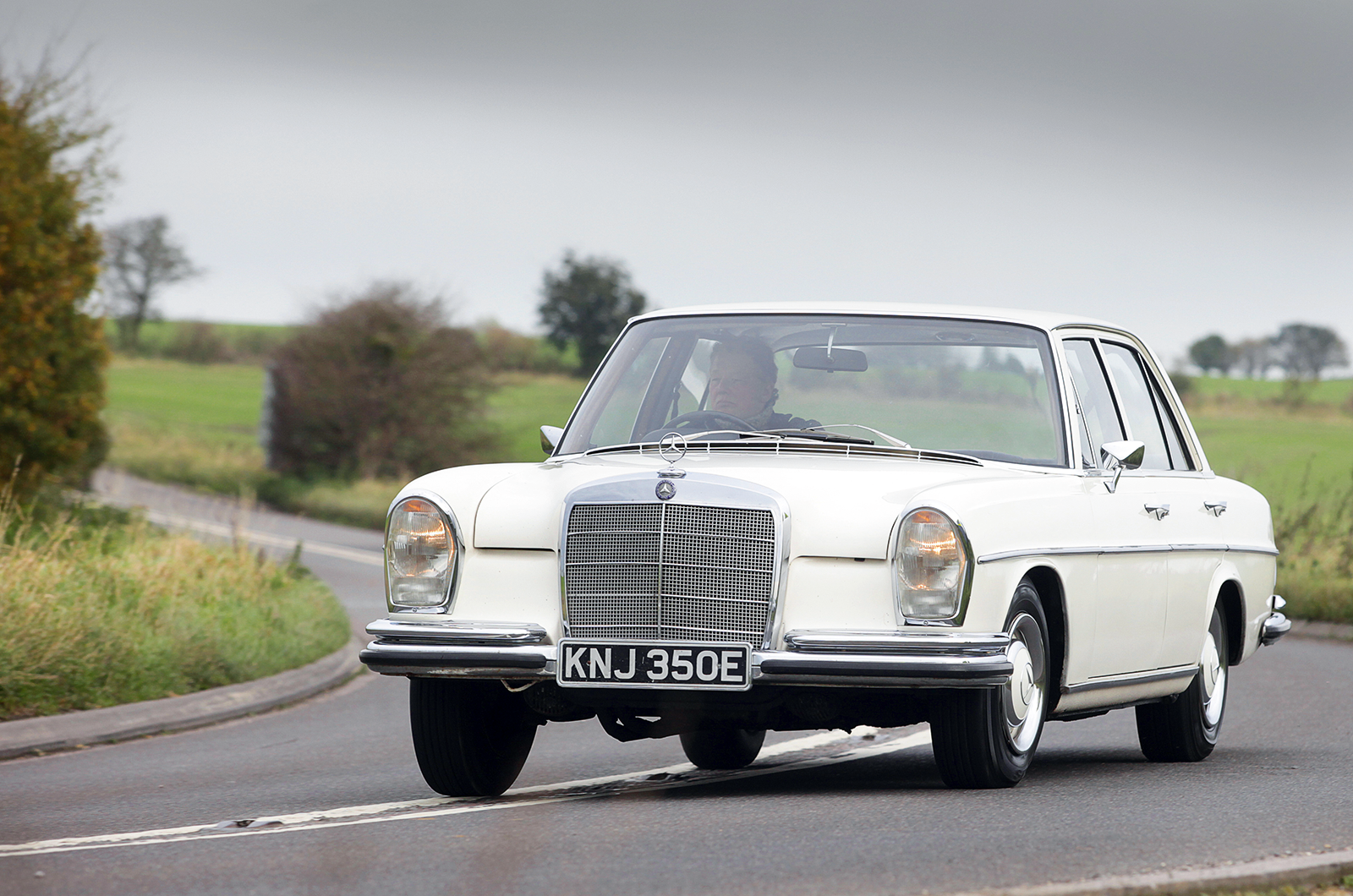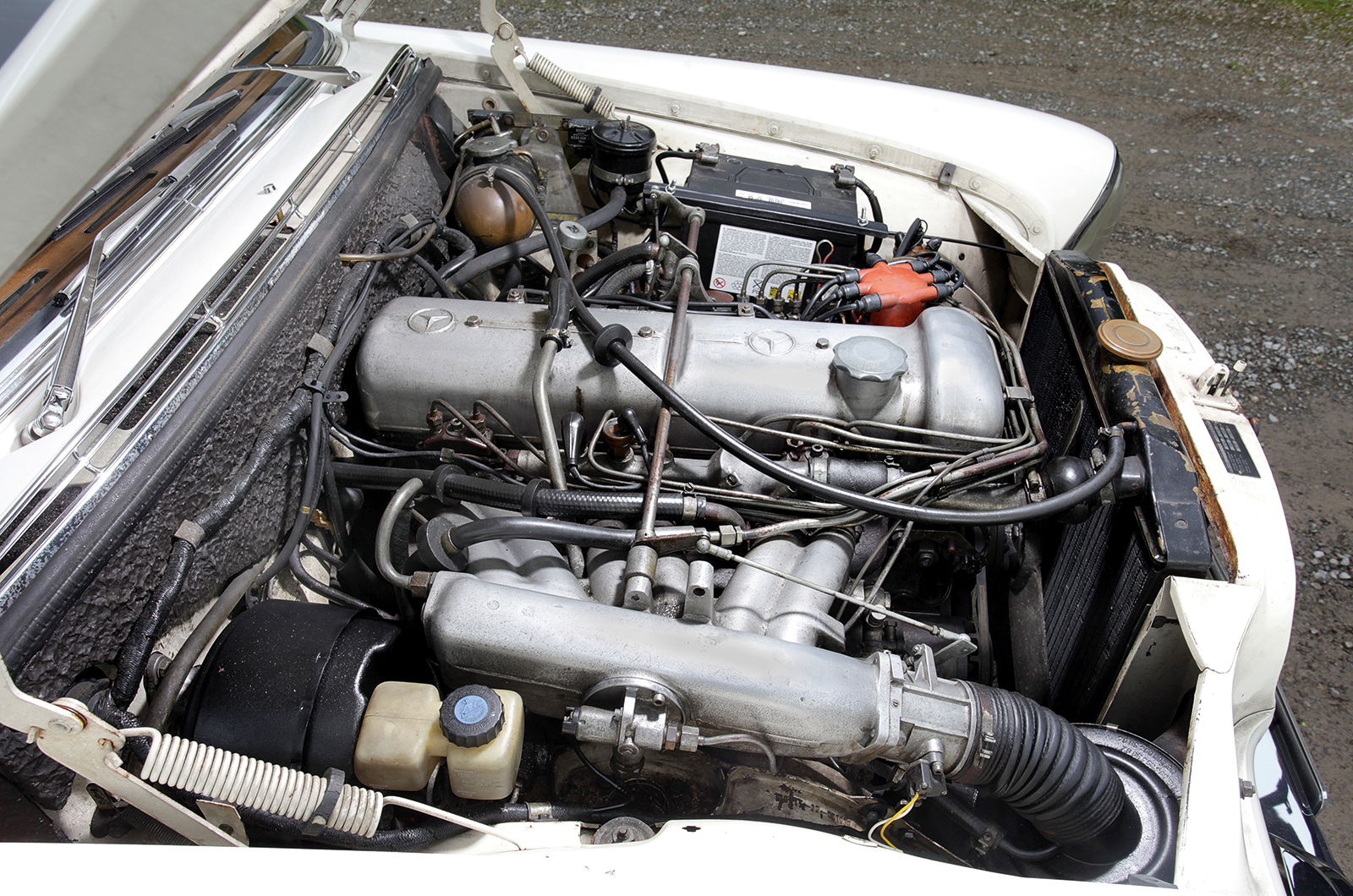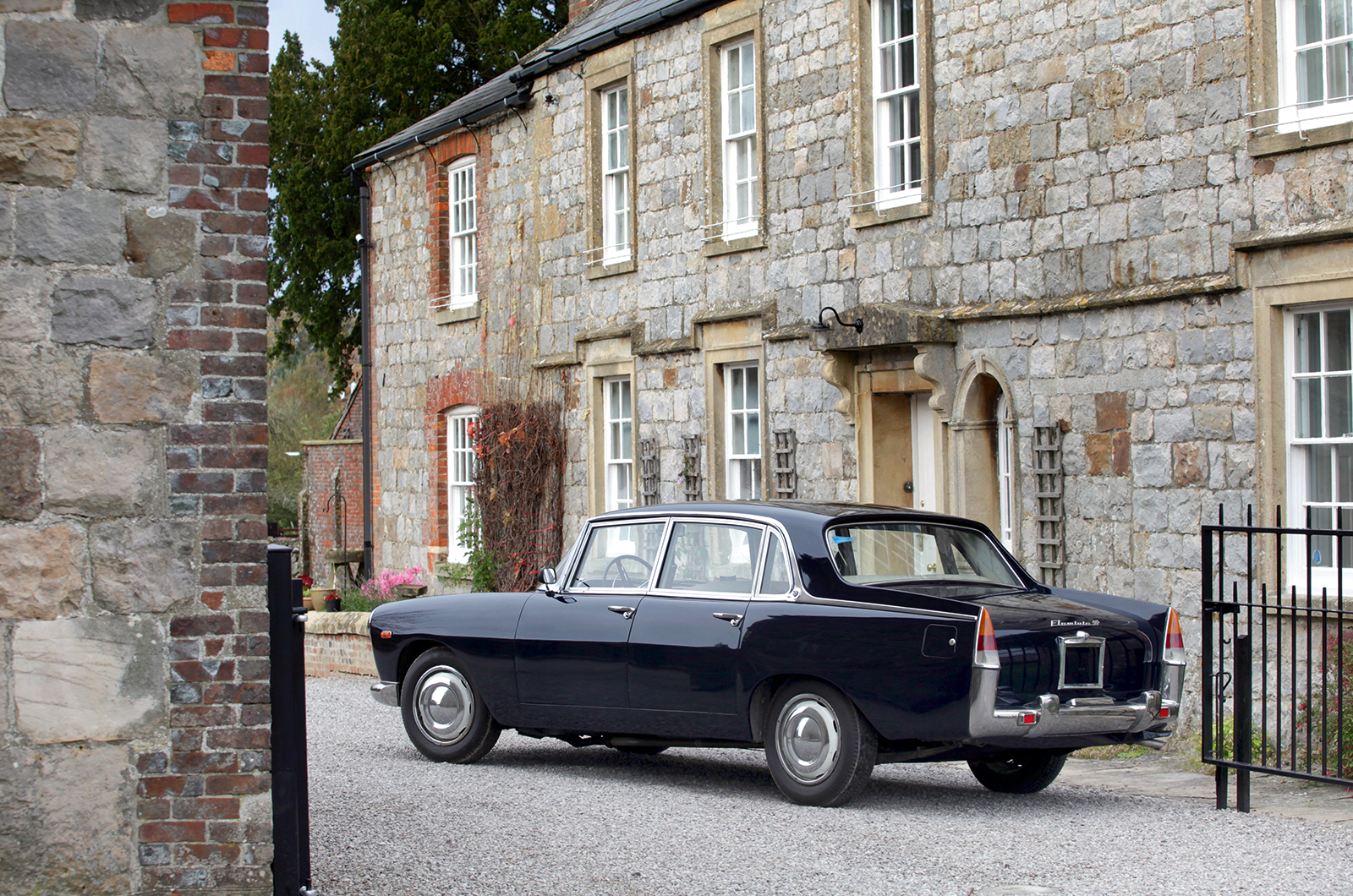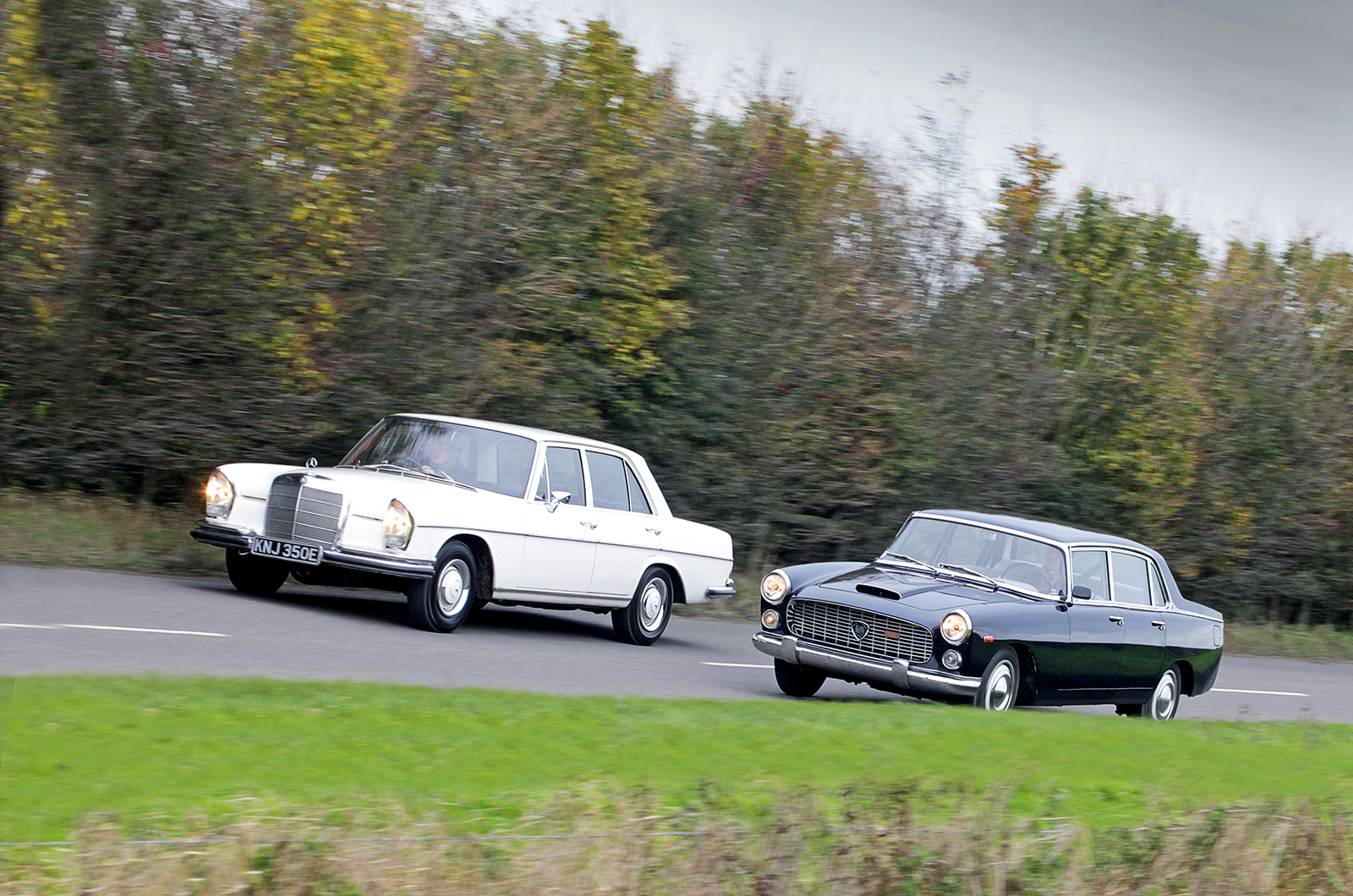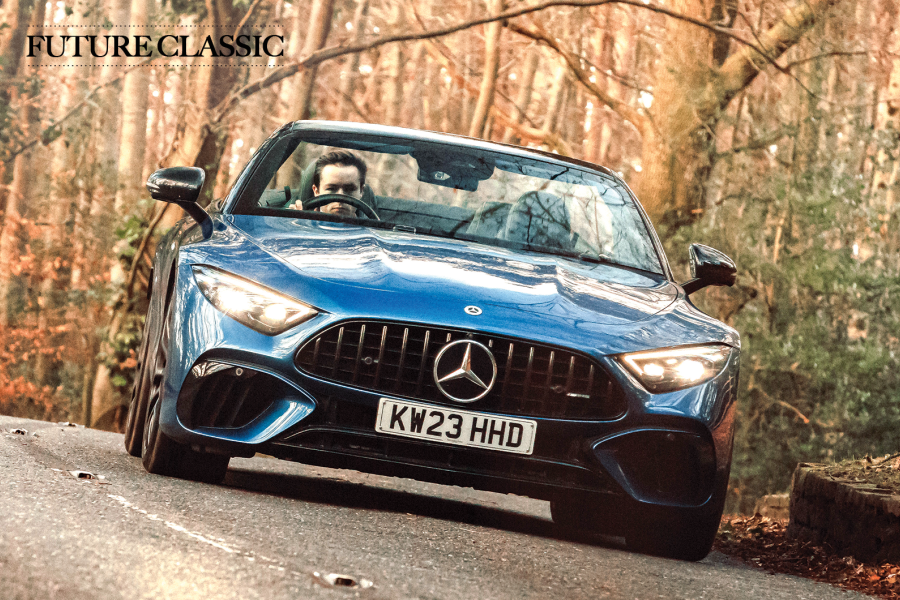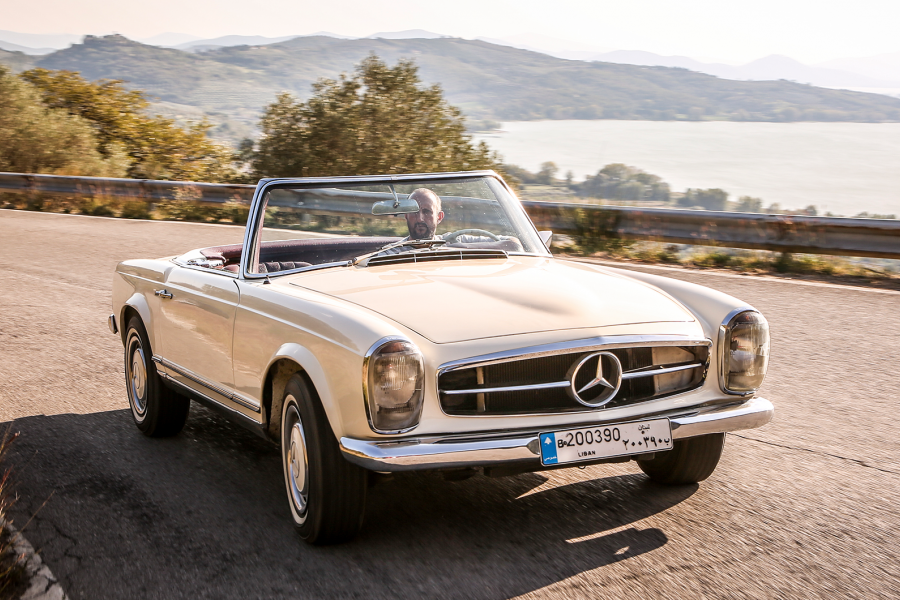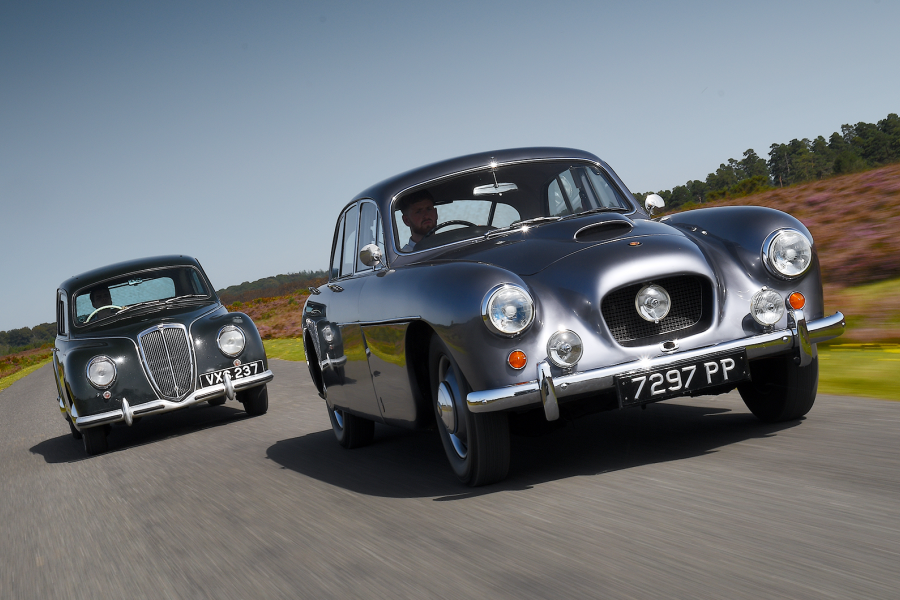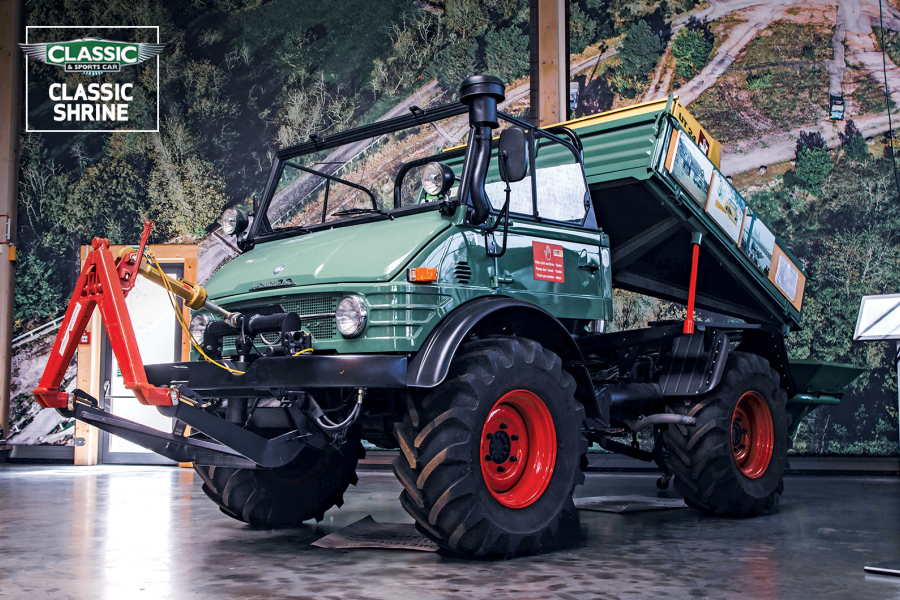It feels squat and supple on the road: the 300SE’s coil-sprung ride is so beautifully soft, you seriously wonder why anyone wanted the SEL’s troublesome air suspension.
Plus, the power steering is a boon rather than a hindrance to placing the Mercedes accurately.
In a straight line, it has all the stability of the Lancia, and when you are moving quickly you pretty much forget it has PAS. It doesn’t wheeze or snatch or deprive you of feel, but just unobtrusively assists.
Once you have the measure of its cool efficiency, the 300SE invites you to drive it quite hard; there is a crisp authority to the engine’s sound and delivery that can bring out the Uhlenhaut in some drivers.
Holding the big steering wheel and looking out over the three-pointed star, the 300SE has a sense of purpose and command that is always impressive.
The Flaminia’s rear lights meld into the bumpers
It would prove an easier car to live with than the Flaminia and has many practical advantages over the Italian that clearly illustrate Stuttgart’s much more highly developed understanding of the requirements of the 1960s luxury saloon market.
You could buy it with your head and heart and never look back, but personally I could never walk away from the sophisticated charms of the Flaminia.
If the Mercedes conjures images of ruthless German businessmen tearing up an autobahn in the name of the economic miracle, then the Lancia evokes Bardot purring up to the kerb outside a café or a club on the Via Veneto. I know where I’d rather have found myself.
Most Lancia fans secretly acknowledge that the saloon variants of their favoured model usually offer the most undiluted driving and ownership experience.
On that basis, the Flaminia Sedan is possibly the best ‘real’ Lancia of the lot – if you judge it on technical pedigree and refinement.
It represents the apogee of the firm’s reputation as a maker of outstanding four-door cars. Lancia may subsequently have built several more obviously exciting machines, but never one so exquisitely engineered – perhaps even over-engineered – as this.
Images: James Mann
Factfiles
Lancia Flaminia Sedan 2.8
- Produced/number built 1957-’70/4023
- Construction steel monocoque
- Engine all-alloy, overhead-valve 2775cc 60º V6, with single Solex 40 PAAI carburettor
- Max power 139bhp @ 5000rpm
- Max torque 187Ib ft @ 5300rpm
- Transmission four-speed manual transaxle or Saxomat semi-auto, driving rear wheels
- Brakes discs all round, with servo
- Steering worm and roller
- Suspension: front independent, by double wishbones, coil springs rear de Dion axle, semi-elliptic leaf springs, Panhard rod; anti-roll bar f/r
- Length 15ft 9in (4801mm)
- Width 5ft 8in (1727mm)
- Height 4ft 10in (1473mm)
- Wheelbase 9ft 5in (2870mm)
- Weight 2750Ib (1247kg)
- 0-60mph 13 secs
- Top speed 106mph
- Price new £2946
Mercedes-Benz 300SE
- Produced/number built 1965-’67/2737 (including long-wheelbase SELs)
- Construction steel monocoque
- Engine iron-block, alloy-head, single-overhead-cam 2996cc straight-six, with Bosch mechanical fuel injection
- Max power 195bhp @ 5500rpm
- Max torque 203Ib ft @ 4100rpm
- Transmission four-speed automatic, driving rear wheels
- Brakes discs all round, with servo
- Steering power-assisted recirculating ball
- Suspension independent all round, at front by double wishbones rear single-joint, low-pivot swing axles; coil springs f/r (SEL has air bags)
- Length 16ft 1in (4902mm)
- Width 5ft 11in (1803mm)
- Height 4ft 9in (1448mm)
- Wheelbase 9ft ¼in (2750mm)
- Weight 3440Ib (1560kg)
- 0-60mph 10 secs
- Top speed 118mph
- Price new £4085
READ MORE
Lancia Flaminia family: the last of the proper Lancias
Mercedes-Benz W123: some things were built to last
Something borrowed: celebrating the Bristol 400
Martin Buckley
Senior Contributor, Classic & Sports Car
